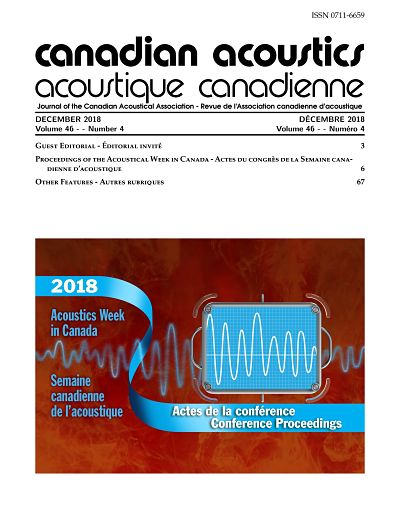Testing Symmetry Of Temporal Window Of Integration In Vibrotactile And Auditory Speech Information On Phoneme Perception
Abstract
The temporal window for enhancement in cross-modal integration is asymmetrical, and does not require synchrony of stimuli for integration; this temporal offset has been linked to differences in relative signal speed as can be seen in audio-visual integration [Munhall et al. 1996. Perc. Psychophys. 58: 351] and audio-aerotactile integration [Gick et al. 2010. Journ. Acoust. Soc. Am. 128: EL342] of speech. However, as vibrotactile cues normally accompany acoustic cues, no difference in signal speed – and no concomitant perceptual asymmetry – is experienced between these two modalities. Contrary to previous research, we predict a symmetrical window for integration. A portable voice-coil transducer is used to produce vibrotactile stimuli, similar to the laryngeal vibrations normally felt in voiced speech. Results of an experiment will be presented in which participants are asked to discriminate between minimal pairs in noise with the device between their thumb and index finger, and in which audio and vibrotactile stimuli are presented in different orders and at different temporal offsets. Implications will be discussed for theories of cross-modal integration. [Funding from NSERC].
Additional Files
Published
How to Cite
Issue
Section
License
Author Licensing Addendum
This Licensing Addendum ("Addendum") is entered into between the undersigned Author(s) and Canadian Acoustics journal published by the Canadian Acoustical Association (hereinafter referred to as the "Publisher"). The Author(s) and the Publisher agree as follows:
-
Retained Rights: The Author(s) retain(s) the following rights:
- The right to reproduce, distribute, and publicly display the Work on the Author's personal website or the website of the Author's institution.
- The right to use the Work in the Author's teaching activities and presentations.
- The right to include the Work in a compilation for the Author's personal use, not for sale.
-
Grant of License: The Author(s) grant(s) to the Publisher a worldwide exclusive license to publish, reproduce, distribute, and display the Work in Canadian Acoustics and any other formats and media deemed appropriate by the Publisher.
-
Attribution: The Publisher agrees to include proper attribution to the Author(s) in all publications and reproductions of the Work.
-
No Conflict: This Addendum is intended to be in harmony with, and not in conflict with, the terms and conditions of the original agreement entered into between the Author(s) and the Publisher.
-
Copyright Clause: Copyright on articles is held by the Author(s). The corresponding Author has the right to grant on behalf of all Authors and does grant on behalf of all Authors, a worldwide exclusive license to the Publisher and its licensees in perpetuity, in all forms, formats, and media (whether known now or created in the future), including but not limited to the rights to publish, reproduce, distribute, display, store, translate, create adaptations, reprints, include within collections, and create summaries, extracts, and/or abstracts of the Contribution.


